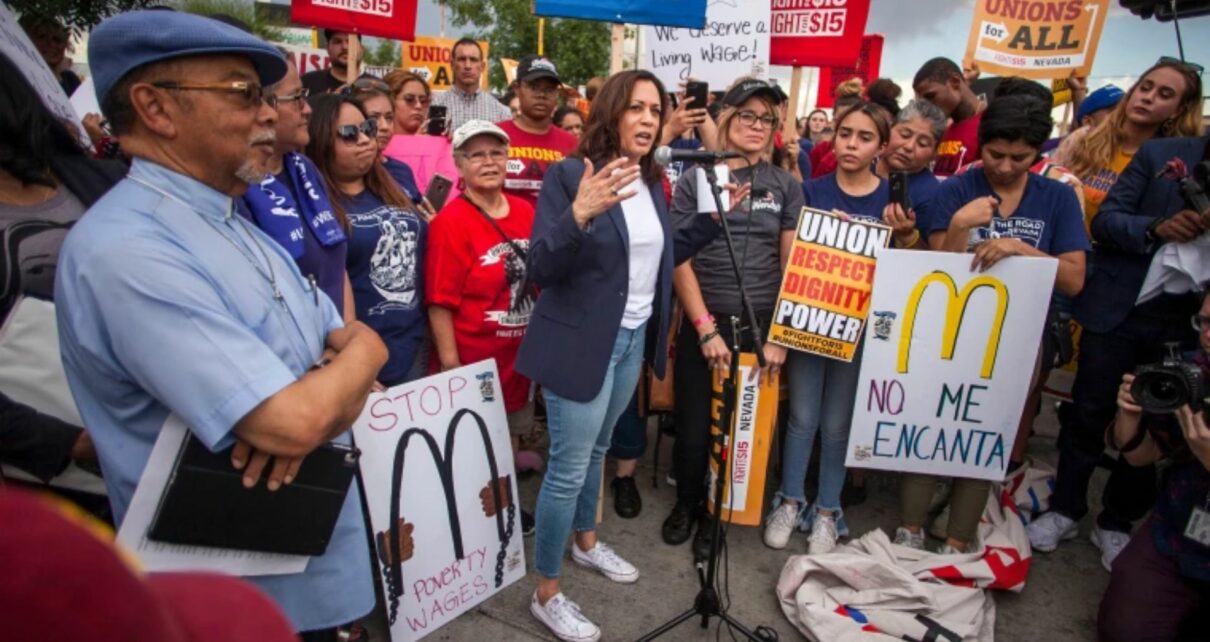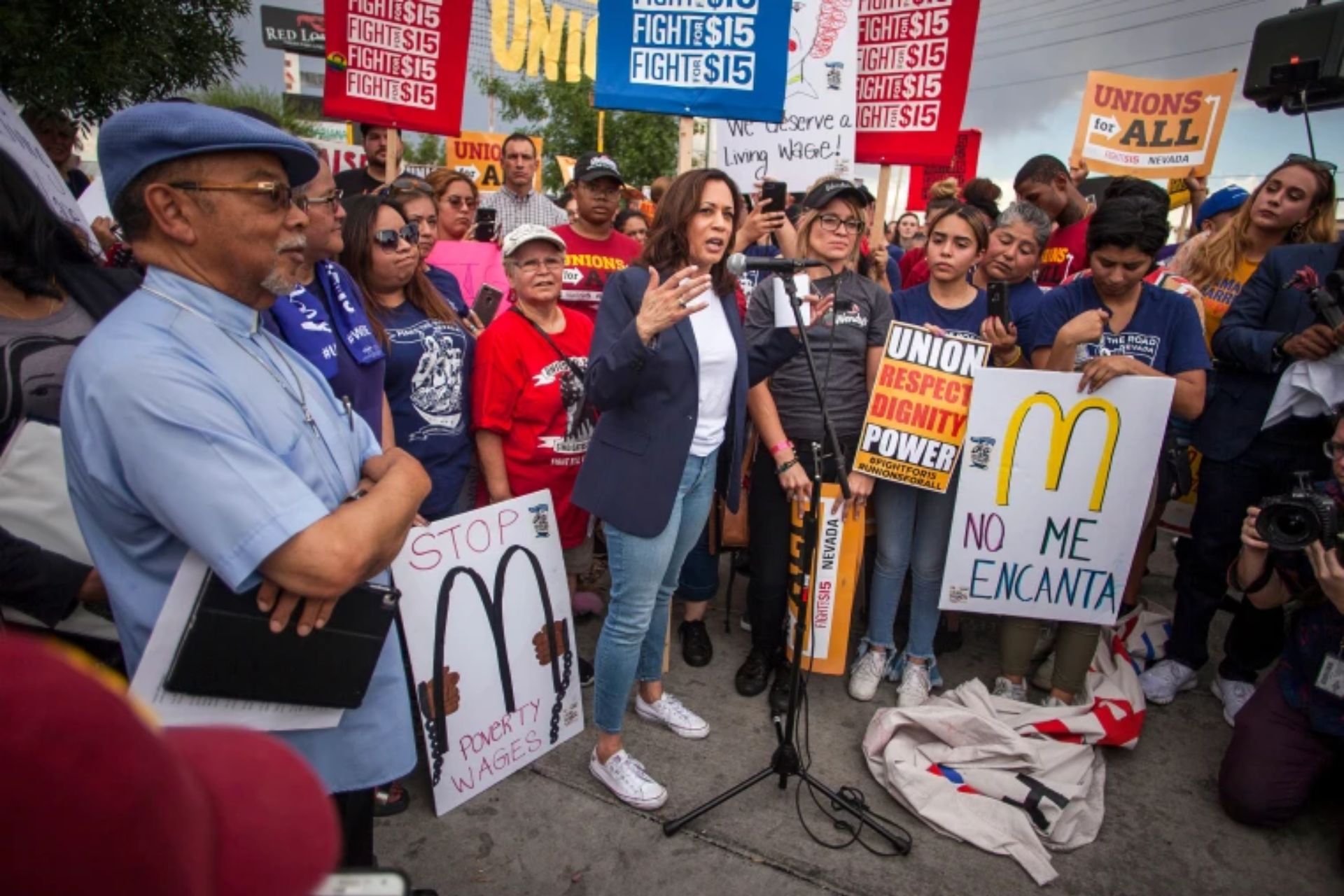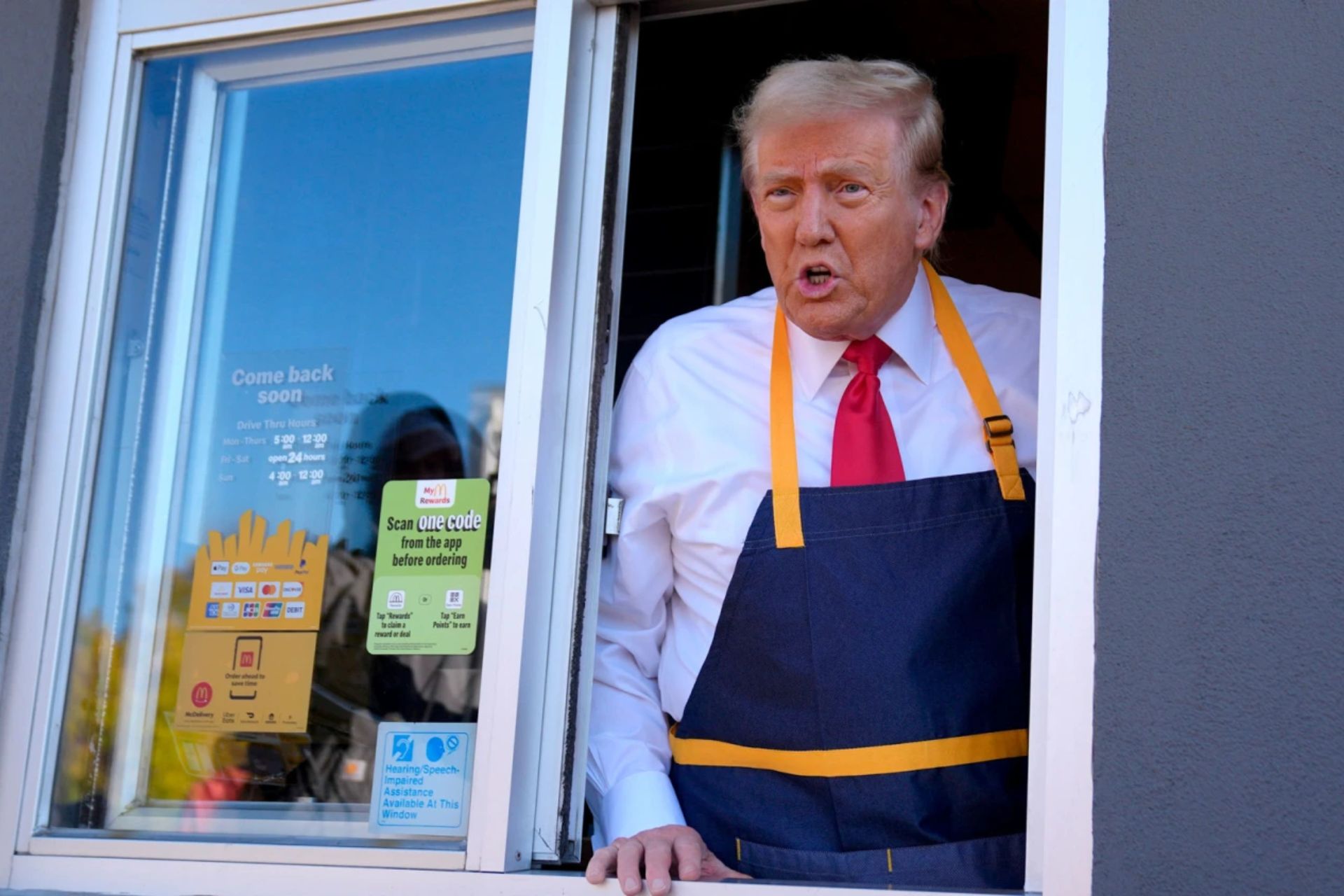Cover Image Name: Trump’s and Harris’s Voter Strategies
Cover Image Credit: NBC News
In the fast-food world, McDonald’s has gained much attention as the 2024 presidential election campaign builds heat between Donald Trump and Kamala Harris in their competition for working-class voters’ hearts and stomachs. On Sunday, Trump went to a McDonald’s in Pennsylvania for a campaign event targeted at courting one of the country’s most critical groups of voters, whose choices will determine the course of the election in this swing state. This blog post will explore the stark contrast both candidates have taken to pursue low-wage workers’ interests and what this may portend for American politics’s future.
The High Costs to Working-Class Voters
Low-wage workers are a vital and extremely undercounted population among the electorate. Millions of lower-income workers in fast-food and other service-based restaurants and stores are facing unprecedented economic hardships, from increasing cost of living to stagnant wages. The Tufts University study demonstrates there is a clear direct correlation between income level and voter turnout: a lower income translates to a lesser likelihood of voting. Both Trump and Harris want to mobilize these voters, and, hence, their strategies are to relate to the economic issues that form a more important component for this kind of a group.
Strategy of Trump
Donald Trump is trying to shape his campaign in the form of a referendum on the Biden-Harris administration’s record. He wants to connect with the working-class voters by targeting them through economic issues related to the experiences that he witnesses. Trump intends to extend his prior tax cuts and roll back regulations he claims will lower the cost of energy, spurring an economy. It’s a stunt of offering himself to serve fries at the McDonald’s drive-through to try to depict himself as having a connection with regular people by saying he understands their pains.
However, critics claim that this policy approach of Trump has not been holistic in designing policies to specifically have an impact on low-income working families. His general promises on cutting regulations and corporate taxes pose questions as to how these moves would directly impact workers’ paychecks. Additionally, in terms of his proposals, such as high tariffs on importation, the position of Trump would be criticized by economists as they fear that this will spur up prices and inflation, burdening the very workers he wants to lift.
An Economics of Support to Labor
But Vice President Kamala Harris is anchoring her campaign around an active agenda focused on championing low-wage workers. Her proposed measures will include the expansion of the child tax credit, subsidies for first-time homebuyers, the hike in minimum wage, and paid leave. Harris wants to draw out a sharp distinction between her economic agenda and Trump’s campaign agenda and portray herself as the champion of the working class.
Harris’s policies are likely to benefit lower-wage workers more than Trump’s proposed policies. For instance, the lowest-earning 20 percent of households could expect average federal incentives of $2,300 in Harris’s plan as against just around $350 in Trump’s proposal, concludes analysis from the Wharton School of the University of Pennsylvania. Although part of the benefits from Harris’s plan are less favorable because of slower wage growth, which a higher corporate tax rate promotes, she is still considered to be relatively more favorable for low-income workers.
Inside Image Name: Voter Strategies in the 2024 Election
Inside Image Credit: NBC News
The McDonald’s Connection
In the ongoing electoral battle, McDonald’s is fast becoming a strong metaphor, acting not only as a symbol of the fast-food industry itself but also more broadly as an emblem of themes and causes relating to the welfare of low-wage workers. McDonald’s itself claims that 1 in 8 Americans has worked at McDonald’s sometime or another, thus visibly linking it with the daily lives of many voters. By associating their campaigns with McDonald’s, Trump and Harris are trying to tap into that working-class struggle and aspiration.
The picture of Trump kissing the fries evokes a nostalgic idea of blue-collar values; the trips of Harris to the working persons highlight her concern for making life for the working persons better. This vote siphoning, however, both for the candidates, immensely relies on how well the strategy forms them in the minds of voters who feel politically neglected.
Polling Insights: Perceptions of Voter Trust and Economic Concerns
Late polling data reveals exactly how voters view the two candidates on economic issues. Mid-October, an Associated Press poll said voters trust Harris more about taxes on the middle class, jobs and unemployment, and the cost of housing. Voters trust Trump more concerning groceries and gas, as well as tariffs. It seems voters are seriously considering which candidate’s plan aligns most with their concerns.
Still, both have their weaknesses. Harris hasn’t taken a stance on the federal minimum wage, standing at $7.25 an hour, or whether she would ensure paid leave for any amount of weeks. Trump hasn’t committed to raising the minimum wage or forcing paid leave either, leaving voters still unclear on what the potential president stands for.
The Future of Working-Class Politics
They will both be able to redefine their relationships with working-class voters in the 2024 election. Crucial to this is going to be further refinement of their message and outreach, but while perfecting them, they must pay attention to the overwhelming issues concerning low wage workers as the cost of living keeps going up.
While lower-wage workers have seen pay gains over the past several years, inflation has picked up too, reducing some of those advances. Average hourly pay for front-line fast-food workers hit a record at $16.26, up 8% from when President Biden took office when adjusted for inflation. Still, that progress has to be balanced against the broader economic context and the inflationary pressures that have persisted.
Conclusion
Economic Agendas and Their Impact on Choices Made by Voters
As election day draws closer, the fight over low-wage workers’ ballots will be heating up. Harris and Trump well know that sector will be important in determining the outcome of the elections. As the battle is being staged on the battleground of McDonald’s itself, economic agendas are most likely to decide the ballots of these voters in battleground states.
The political landscape is changing, and the two candidates must clearly speak their minds on vision regarding the future while working class Americans’ real issues are being addressed. Ultimately, the candidate who can resonate with voters on an economic issue may very well determine who occupies the White House. In the final days leading up to Election Day, we are all going to be very interested in seeing how Trump and Harris each seek a way around this difficult situation for working-class votes.






